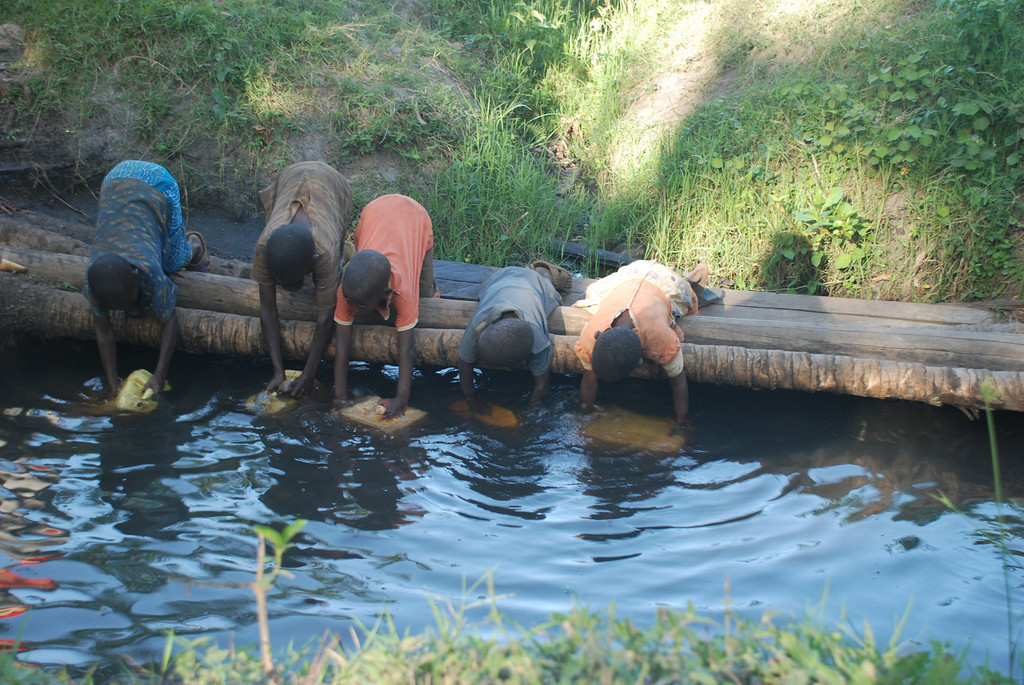The Current Situation In Bbanda
 Bbanda has no water distribution system or running water and the citizens have to walk to a well, one of the four functioning boreholes in and around town, a nearby dam, or Lake Wamala, a lake a few miles from Bbanda’s center. Often these walks are over a mile. Some wells can be unreliable, only supplying the water needed for a family during Uganda’s rainy season. During the dry season, families need to collect their water from other water sources. In all of Bbanda there are a total of nine open wells, eight boreholes, three shallow wells, a dam and Kampala Lake. Four of the boreholes and one shallow well were not functioning. A team from Engineers Without Borders tested water from each source, and found that all of the water collected tested positive for coliforms, a type of bacteria, and all of the water was slightly acidic, which can mean that the water is corrosive. Some of the water was infested with E-coli. Usually, children from the families go to get the water that a family needs. They carry the water in jerry cans, which vary in size and can hold five to twenty liters (which is around one to five gallons). The trip to a water source and back usually takes an hour, and water is usually fetched two or three times a day. Then the water must be boiled to destroy contaminants. This is a long process for families without stoves. Some of the very poor families received water barrels from Friends of the Poor a few years ago. These water barrels use gutters to catch rainwater falling from the roof of a house. However, these barrels often can’t supply enough water, especially during the dry season, and those families must find different water sources. Also, there is no way to divert the “first flush,” the first water to come off the roof, which is often contaminated.
Bbanda has no water distribution system or running water and the citizens have to walk to a well, one of the four functioning boreholes in and around town, a nearby dam, or Lake Wamala, a lake a few miles from Bbanda’s center. Often these walks are over a mile. Some wells can be unreliable, only supplying the water needed for a family during Uganda’s rainy season. During the dry season, families need to collect their water from other water sources. In all of Bbanda there are a total of nine open wells, eight boreholes, three shallow wells, a dam and Kampala Lake. Four of the boreholes and one shallow well were not functioning. A team from Engineers Without Borders tested water from each source, and found that all of the water collected tested positive for coliforms, a type of bacteria, and all of the water was slightly acidic, which can mean that the water is corrosive. Some of the water was infested with E-coli. Usually, children from the families go to get the water that a family needs. They carry the water in jerry cans, which vary in size and can hold five to twenty liters (which is around one to five gallons). The trip to a water source and back usually takes an hour, and water is usually fetched two or three times a day. Then the water must be boiled to destroy contaminants. This is a long process for families without stoves. Some of the very poor families received water barrels from Friends of the Poor a few years ago. These water barrels use gutters to catch rainwater falling from the roof of a house. However, these barrels often can’t supply enough water, especially during the dry season, and those families must find different water sources. Also, there is no way to divert the “first flush,” the first water to come off the roof, which is often contaminated.







